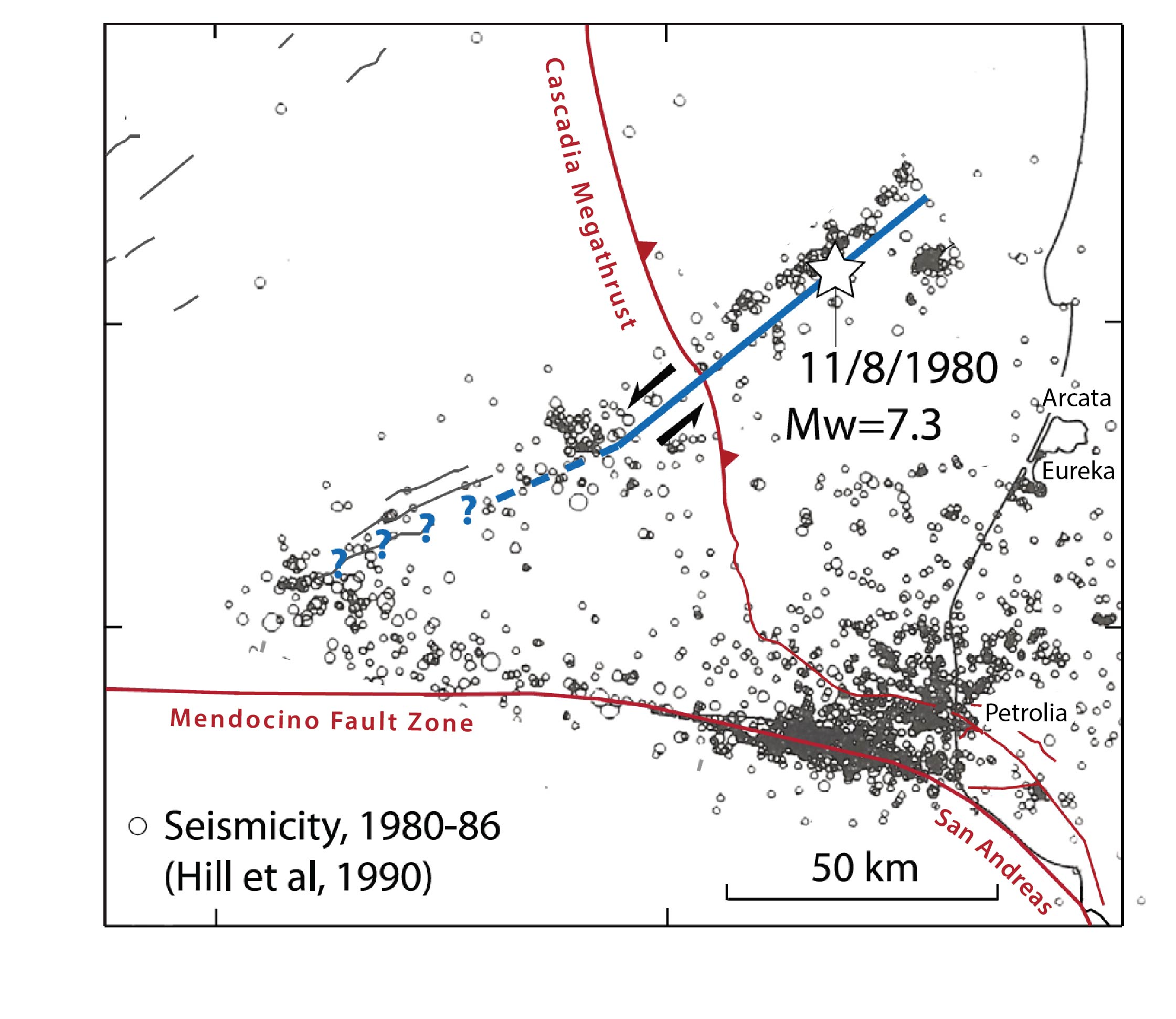By David Jacobson, Temblor
Check your seismic hazard rank

Over the last month, things have been relatively quiet on the earthquake front. While this is good for everyone’s well-being, it also lets us examine smaller trends in earthquake behavior. Today, we thought we’d focus on the absence of earthquakes along the northern portion of the San Andreas, and how it is a stark contrast to the intense activity at the Mendocino triple junction off the California Coast.
Everyone in California knows the San Andreas Fault. As it winds its way for approximately 1,300 km through California, from the Gulf of California to Cape Mendocino, it cuts near the populated centers of Los Angeles and San Francisco. In the 1906 San Francisco earthquake, the entire Northern San Andreas Fault, from San Juan Bautista to the Mendocino Triple Junction ruptured. This includes a large portion of the fault which is offshore. However, since then, this section of the San Andreas has been nearly aseismic. This is despite the fact that the Northern San Andreas accommodates approximately 75% of the plate motion in Northern California. So, where is the seismicity? While some of it is seem to the east of the San Andreas, along the Maacama and Bartlett Springs faults, significant seismicity is seen to the north at the Mendocino Triple Junction.
The Mendocino Triple Junction marks the collision point of three major tectonic plates. These plates, known as the Pacific, North American, and Gorda are all moving at different rates and in different directions. It should be pointed out that the Triple Junction marks the southernmost extent of the Cascadia Subduction Zone. Because of this oblique collision, significant strain builds up, resulting in one of the most seismically active regions on earth.
In addition to earthquakes caused by the stress buildup of continental and oceanic collision, the region also saw increased stress from the 1906 earthquake. Based on coulomb stress modeling completed by Ruth Harris and Robert Simpson in 1998, the Mendocino Triple Junction lies in an area of increased stress, while the Northern San Andreas is in a stress shadow (faults on which stress was decreased). Furthermore, large earthquakes around the Mendocino Triple Junction, including a M=7.3 in 1980, have imparted additional stress.

What all of this shows is that the Mendocino Triple Junction has numerous forces acting on it, all of which likely contribute to it being extremely seismically active. Additionally, the coulomb stress modeling helps explain why the Northern San Andreas has been very quiet for over 100 years. This also highlights how important it is to use more than past earthquakes to interpret seismic hazard, for if we were to only use past earthquakes, we would not see the Northern San Andreas as a hazard. However, using models such as the Global Earthquake Activity Rate (GEAR) model, which is available in Temblor and incorporates strain rates, we can see that the Mendocino Triple Junction and Northern San Andreas are significant hazards to California.

References
USGS
Berkeley Seismological Laboratory
Goldfinger et. al., Rupture lengths and temporal history of significant earthquakes on the offshore and north coast segments of the Northern San Andreas Fault based on turbidite stratigraphy, Earth and Planetary Science Letters 254 (2007) 9–27
John C. Rollins and Ross S. Stein, Coulomb stress interactions among M ≥ 5.9 earthquakes in the Gorda deformation zone and on the Mendocino Fault Zone, Cascadia subduction zone, and northern San Andreas Fault, JOURNAL OF GEOPHYSICAL RESEARCH, VOL. 115, B12306, doi:10.1029/2009JB007117, 2010
Ruth Harris and Robert Simpson, Suppression of large earthquakes by stress shadows: A comparison of Coulomb and rate-and-state failure, JOURNAL OF GEOPHYSICAL RESEARCH, VOL. 103, NO. B10, PAGES 24,439-24,451, OCTOBER 10, 1998
- Beware quiet segments of the Philippine Fault - May 16, 2025
-
ډیری عوامل افغاني ټولنې د زلزلې پر وړاندې زیانمنوي
- August 11, 2022 - What’s happening this week in Humboldt County, California: The squeeze - February 6, 2019
